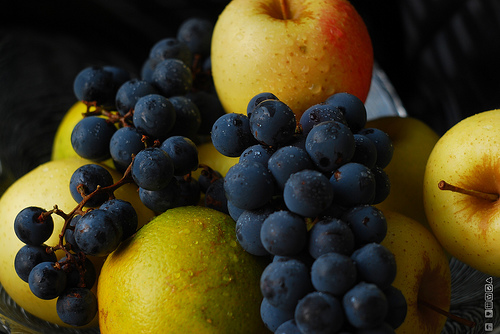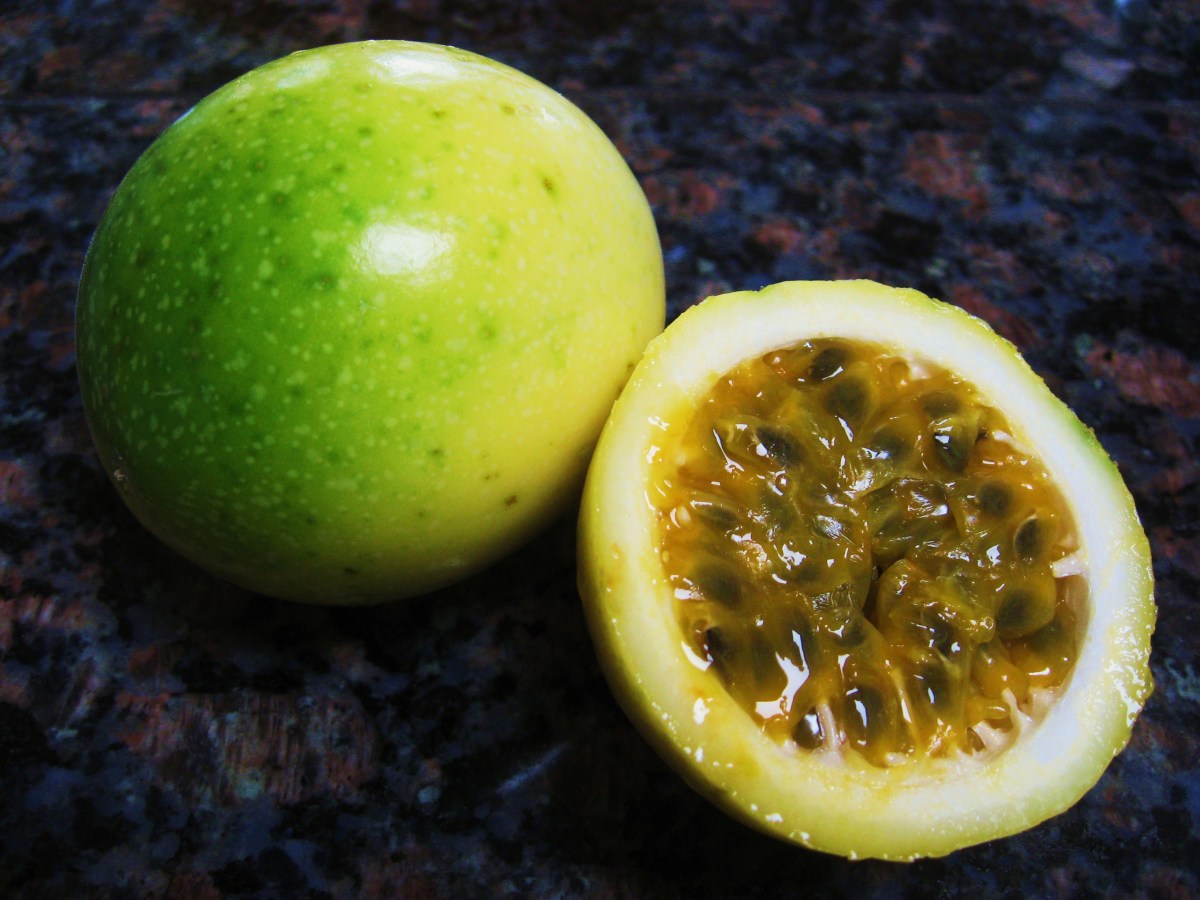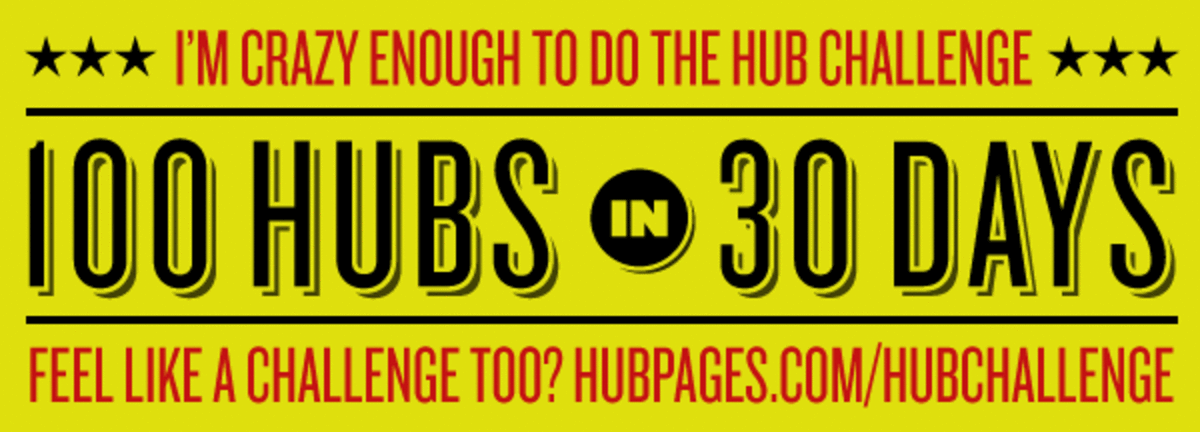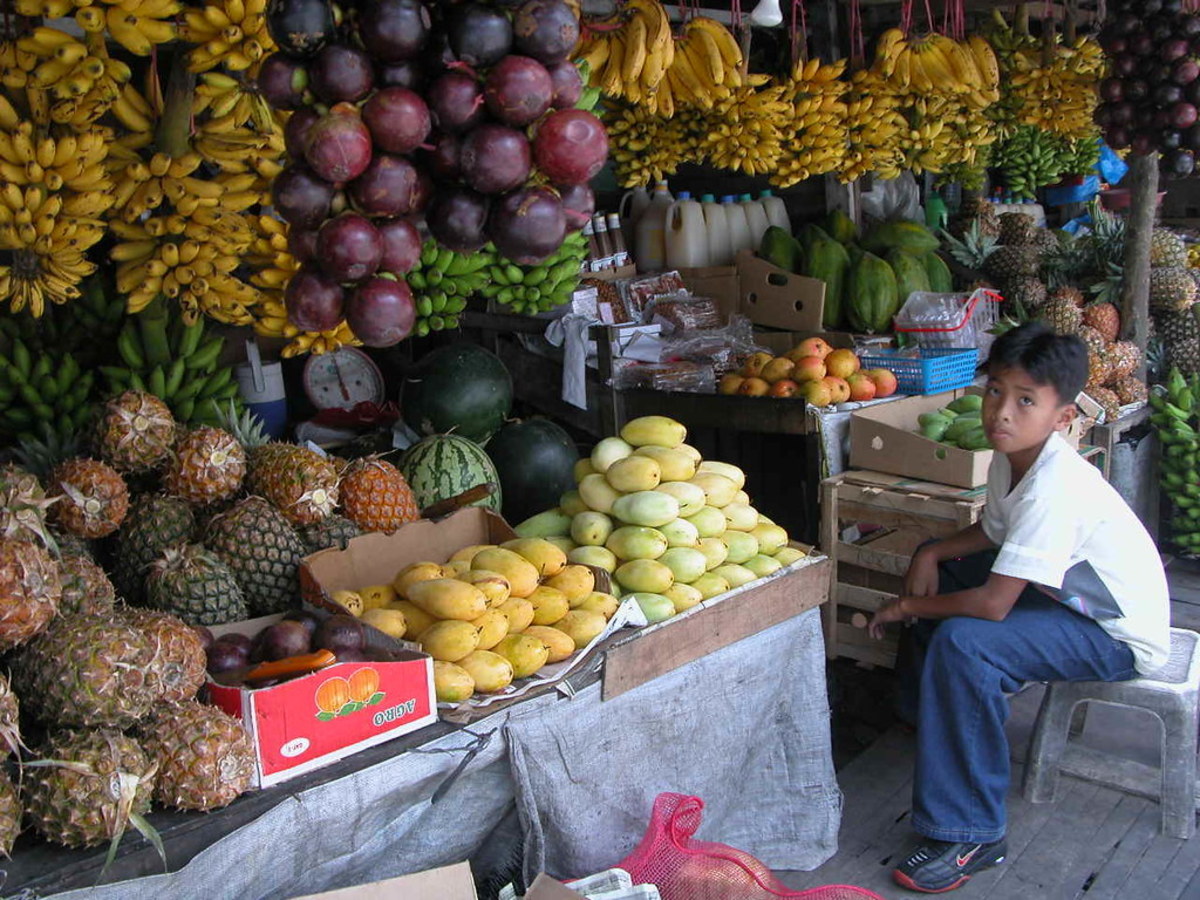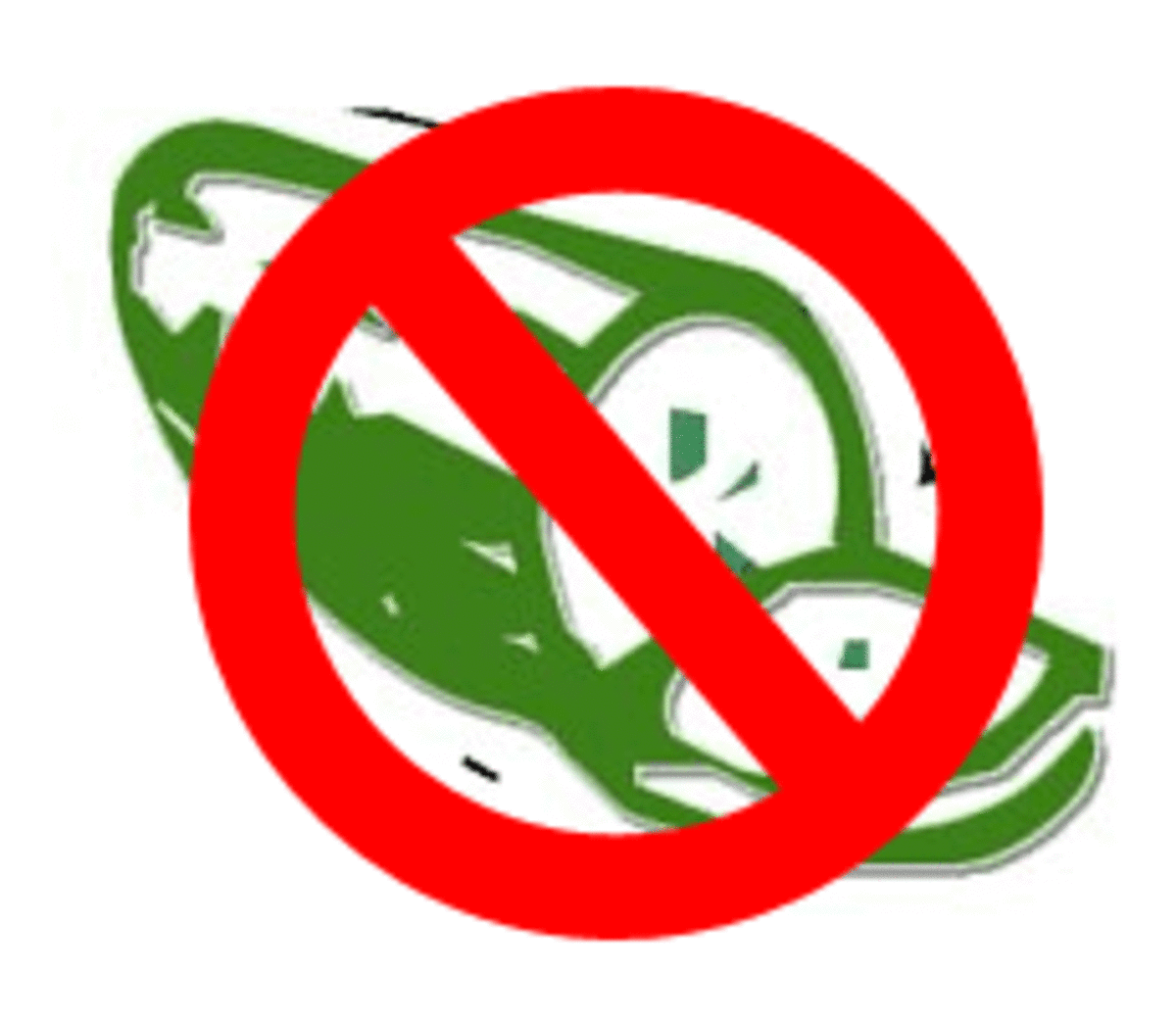Buying Fruit in Season Guide
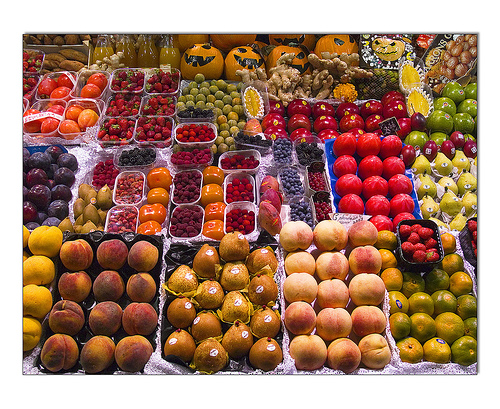
Why Buy Fruit in Season?
Because of modern farming techniques, these days it's possible to buy virtually any produce at any time of the year, regardless of whether it's in season. However, there are a couple of very good reasons to buy fruits in season (and vegetables) whenever possible.
They are health and money. I can't think of any better reasons. If you buy fruits in season, they will be at their nutritional peaks. Buying fruit in season will save you money, too. In season produce is always the cheapest. One more added benefit to buying fruit in season is that the fruit will have the best flavor when in peak season.
Below are fruits in season by month, listed alphabetically. This is for the United States region. And even across the United States, the seasons can vary somewhat. Also included is what to look for to pick the very best fruits in season.
Fruits Poll
What is your favorite fruit?
Books About Fruit
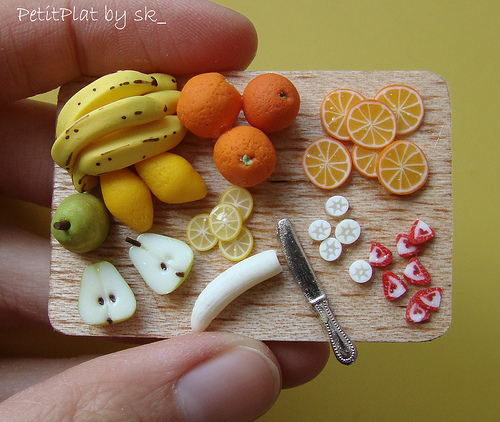
Fruit in Season Guide - Buying Fresh Fruit
Apples- Peak season is September through May - Look for vibrant colors. The peel should be smooth and shiny. They should feel firm. Avoid apples which are soft or have bruises or holes.
Apricots - In season June and July - The color should be a rich yellow. They should feel firm. The color shouldn't be pale. They should be neither hard or too soft. They should look plump, not wrinkled up.
Avocados - In season year round - Avocados can't be judged by size or shape. Their colors range from bright green to black. Avocados should give a bit when slightly squeezed. They should not feel hard. Avoid any avocados that leave a large indentation when squeezed.
Bananas - In season year round - Avoid bruised bananas. They should feel firm, but not be hard. The color should be bright yellow. Avoid bananas with split peels or stems. The ripeness depends on preference. I like no green showing on mine. My mother prefers bananas to already start showing brown specks.
Blackberries - In peak season June through July - Berries should appear clean, bright, plump, and very dark. They should not feel hard. Don't buy them if they are leaking or still have some of the hulls attached.
Blueberries - In season May through September - Ripe blueberries should be bright, firm, plump, and clean. There should be no mold. When you shake their packaging, they should roll around easily.
Cantaloupes - In season June through August - Scent may be your best asset when choosing a ripe cantaloupe in season. It should have a sweet smell, but not be too strong. It should give a little if you squeeze it. It should sound hollow if you thump it. The webbing on the outside should stand out. The color underneath should have a slightly yellow tint, not green. The stem should not be visible. Don't buy a cantaloupe that has soft spots.
Cherries - In season May through August - They should be shiny, firm and look plump, not shriveled. Ripe cherries should be a rich color. Stems should be a nice green color. Avoid cherries with brown spots, that feel mushy, or that have no stems. They should be clean and not sticky. They should look mature, not too small, at least an inch in size.
Cranberries - In season September through December - They should have a bright red color, not pale. They should feel firm, not mushy.
Coconuts - In season September through March - They should feel heavy for their size. If the 'eyes' look wet or like they have mold, pass them by.
Clementines - In season
Figs - In season July through September - They should feel slightly soft. They should be plump in appearance. Stems should be firmly attached. Be sure to smell them, as they ruin rapidly. They should smell sweet. If they smell sour, don't buy them. Avoid bruised figs or ones with too much green appearance.
Grapefruit - Peak season February through June - They should have a nice, uniform rounded shape. They should be shiny and smooth. Ripe grapefruit should feel heavy and firm. Don't buy spotty looking grapefruit.
Grapes - Peak season June through December - Ripe grapes should feel tender and be plump in appearance. The stems should be firmly attached, and should be green and flexible. Avoid any with mold, that are wrinkled, or that have started to become brown or sticky.
Honeydew Melon - Peak season April through October - The melon should have a nice uniform roundness. It should feel just a bit soft. The rind should range from cream color to slightly yellow. You should smell a slight sweet scent. Avoid buying honeydew melons that have any bruises, cracks, or soft spots.
Kiwi - In season April through July - Kiwi should feel soft with a bit of pressure, but not mushy. They should have a fruity aroma.
Lemons - Peak season March through September - Ripe lemons should feel firm to the touch, but not hard. The color should be a vibrant yellow. The peel should be smooth and shiny. They should feel heavy in proportion to their size. Don't buy lemons that are mushy or wrinkled.
Limes - In season May through September - Limes should feel firm and be heavy for their size. They should be a bright color, and be shiny. Reject limes that are mushy, too hard, or wrinkled.
Mangoes - Peak season April through August - Mangoes should feel firm, but not too soft. It should give a bit when it's slightly squeezed. The skin should be smooth and free of blemishes. It should have at least a bit of orange or red shading. They come in a range of sizes. Don't buy mangoes that appear wrinkled or have dark spots.
Oranges - In season November through June - Navel oranges are in season November through April. Valencia oranges are in season March through June. Both should feel heavy for their size and firm.
Papayas - In season year round - The color will vary from light yellow to deep yellow. It should feel a bit soft when squeezed, but not be mushy. It should be smooth with bruises. Reject papayas that are wrinkled, hard, or have darkened areas.
Peaches and Nectarines - In season June through September - They should appear plump and bright. They should be firm, not mushy and not hard. They should be soft enough that they give a bit when gently squeezed. They should smell sweet. The color should range from white to deep yellow with a slight red tint, depending on the variety. Don't buy if extremely hard, bruised or wrinkled.
Pears - In season August through January - Near the stem, they should feel slightly soft. The rest of the fruit should feel firm. Colors vary greatly, depending on the variety. Avoid pears with blemishes, cuts, soft spots, or that look shriveled near the top.
Pineapples - In season March through August - They should be a golden color. Ripe pineapple should feel a little soft. They should look plump, and be heavy compared to size. Look for fresh, bright green leaves. True to their name, they should smell slightly of pine. Avoid buying fresh pineapple if it has dark or soft spots on the sides or bottom.
Plums - In season June through September - They should look plump and feel slightly soft when squeezed. Color should be bright. If it's softer at the top, it's a good sign. It should not be hard at all. Avoid wrinkled looking fruit or plums with splits in the skin or soft spots.
Pomegranates - In season August through November - They should be a bright hue and feel heavy for their size. Ripe pomegranates will be shiny and have a tight skin. They will feel firm, but not be hard. Reject papayas that look dull, wrinkled, or that have splits.
Raspberries - In season June through September - Ripe berries should appear brightly colored and plump. They should also be firm and dry. Don't buy raspberries that are sticky or that seem to be leaking.
Strawberries - In season May through August - Ripe strawberries will be a bright, deep red. They will look plump and have a uniform shape. The strawberry hulls should be a fresh green color. Don't buy strawberries that still have a green or yellow tint or that look wrinkled. Strawberries are very susceptible to mold. Inspect them closely for any hint of mold growth.
Tangerines - In season November through January - They should be a shiny, dark orange color. There should be no green around the stem area. Ripe tangerines should feel soft. Avoid tangerines that are dented or feel light.
Tangelos - In season January through October - Look for the same signs as in tangerines.
Watermelon - In season June through September - It should have a uniform shape. The stem should be brown. It should not appear shiny or have a dull color. It should feel slippery. The bottom should be an attractive cream shade. Reject watermelons with cracks.
Fruit Basket Gift
Fall Fruit
